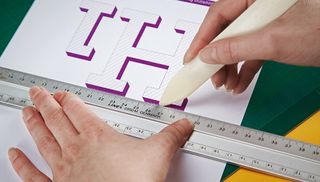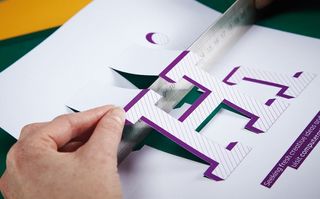10 essential tips for freelancing success
Ensure that your work diary’s as full as you want it to be with these tips from Become’s Martin King
Build your portfolio

If you’re doing work you’re proud of – which won’t be the case for every freelance project – do ask if you can take a PDF sample. If the work isn’t launch sensitive and you’ve not been asked to sign an NDA, then you’ll probably be able to take a PDF. Getting a portfolio together of recent work is a constant challenge for freelancers – and one that’s difficult to remedy if not thought about at the time.
Think short-term

Don’t be put off if you’re asked to work for only one or two days. The freelancers working in long-term bookings were probably only there for a few days initially. Breaking into the freelance scene relies on grasping the opportunity, delivering good work on time and making a good impression in those first few days.
Stay up-to-date

Do your best to stay abreast of the latest software updates, whether this is Adobe CS or more bespoke 3D packages. Knowing the latest versions can only be an advantage, but don’t be surprised or make a big deal of it if you’re asked to work on software that’s three or four versions old.
Get your rates right

Pay rates are a grey area. They can vary from place to place, and can depend on whether you’re working through a recruitment agency or directly. The key is flexibility – don’t price yourself out of the market. It’s better to be working at a slightly lower rate, particularly if it’s long-term, than turning work down and not having any.
Change your CV

If you’re new to freelancing and have a CV prepared for full-time work, you might need to make some subtle changes. Very specific titles can sometimes cause confusion, so make sure that your key strengths are obvious, and include a mission statement that spells out what you can do and how you do it. A concise PDF or online portfolio is, of course, essential.
Don’t be precious

Companies take on freelancers when they have too much work for their permanent staff to handle. It sounds obvious, but a lot of the work you will be asked to do will be on existing projects; adapting or producing new concepts, making amendments or adding illustrations to an almost finished piece. Do the task you’re given to your best ability and move on.
Bring your own device

It’s becoming more common for clients to ask freelancers to bring in their own laptop – often because they have physically run out of machines. If you have a laptop, make sure it has the relevant software on it, is clean and presentable, and that your desktop isn’t going to cause a stir when you turn it on in the office.
Get the Creative Bloq Newsletter
Daily design news, reviews, how-tos and more, as picked by the editors.
Be professional

Don’t make or receive personal calls (except during breaks), don’t spend time on Facebook and don’t do other work on your clients’ time. Ask about the processes and systems used, let people know when you’re ready for a new task, and ask questions about anything you don’t understand.
Stay flexible

The nature of working freelance is that you’ll often find yourself juggling many different projects at once. But just because a particular project might not play to all your strengths, it’s definitely not an excuse not to give less than 100 per cent – more interesting and fulfilling projects will be your reward.
Enjoy yourself

The benefits of freelance work can be numerous: you’ll work on a variety of projects, in different agencies or client-side brands. You’ll have the opportunity to do some great work, meet new people and find different ways of working. Don’t forget, however, that the real beauty is the flexibility. If you work every day of the year, you might be well paid for it, but you’ll also be missing the point.
Icons: Dan Gray
Discover 20 inspiring design portfolios over at Creative Bloq.

Thank you for reading 5 articles this month* Join now for unlimited access
Enjoy your first month for just £1 / $1 / €1
*Read 5 free articles per month without a subscription

Join now for unlimited access
Try first month for just £1 / $1 / €1
The Creative Bloq team is made up of a group of design fans, and has changed and evolved since Creative Bloq began back in 2012. The current website team consists of eight full-time members of staff: Editor Georgia Coggan, Deputy Editor Rosie Hilder, Ecommerce Editor Beren Neale, Senior News Editor Daniel Piper, Editor, Digital Art and 3D Ian Dean, Tech Reviews Editor Erlingur Einarsson and Ecommerce Writer Beth Nicholls and Staff Writer Natalie Fear, as well as a roster of freelancers from around the world. The 3D World and ImagineFX magazine teams also pitch in, ensuring that content from 3D World and ImagineFX is represented on Creative Bloq.
